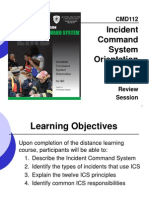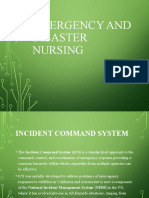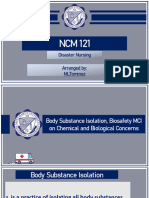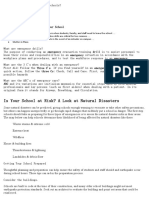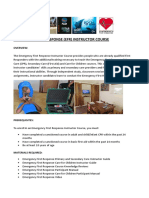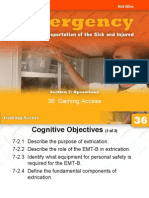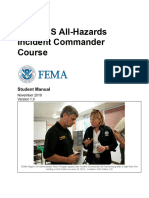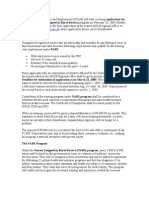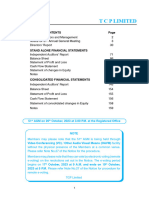0% found this document useful (0 votes)
312 views36 pagesIncident Command System As Practiced in The US
The Incident Command System (ICS) is a standardized organizational structure used to command, control, and coordinate response to all types of disasters and emergencies in a unified and coordinated manner. ICS can be used for incidents of any size, from small to complex events. Key features include clear objectives, defined roles and responsibilities, common terminology, and scalability to grow or shrink based on the needs of the incident. The system utilizes functional sections for command, operations, planning, logistics, and finance/administration. [END SUMMARY]
Uploaded by
Apriyuanda G. Bayu PradanaCopyright
© © All Rights Reserved
We take content rights seriously. If you suspect this is your content, claim it here.
Available Formats
Download as PPT, PDF, TXT or read online on Scribd
0% found this document useful (0 votes)
312 views36 pagesIncident Command System As Practiced in The US
The Incident Command System (ICS) is a standardized organizational structure used to command, control, and coordinate response to all types of disasters and emergencies in a unified and coordinated manner. ICS can be used for incidents of any size, from small to complex events. Key features include clear objectives, defined roles and responsibilities, common terminology, and scalability to grow or shrink based on the needs of the incident. The system utilizes functional sections for command, operations, planning, logistics, and finance/administration. [END SUMMARY]
Uploaded by
Apriyuanda G. Bayu PradanaCopyright
© © All Rights Reserved
We take content rights seriously. If you suspect this is your content, claim it here.
Available Formats
Download as PPT, PDF, TXT or read online on Scribd
/ 36







